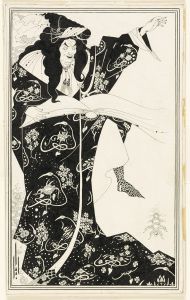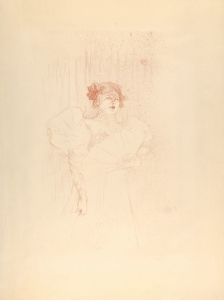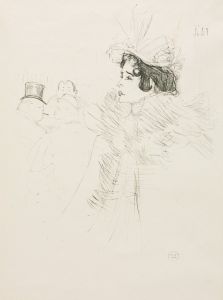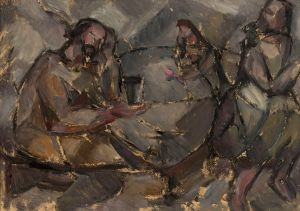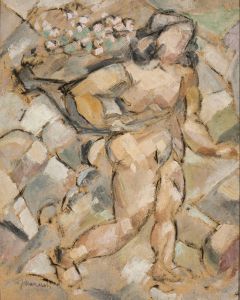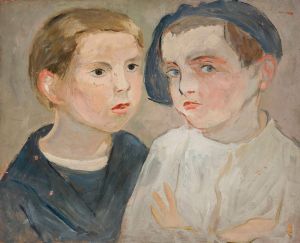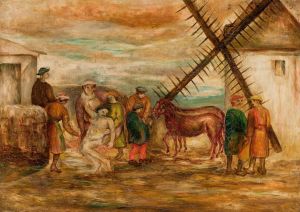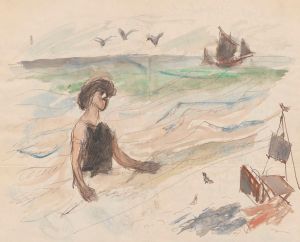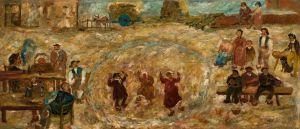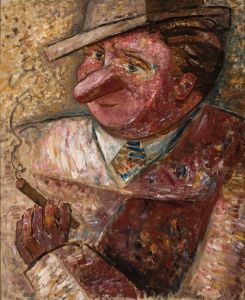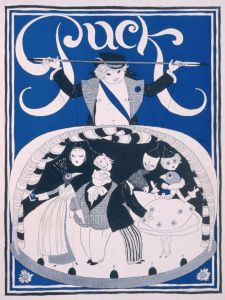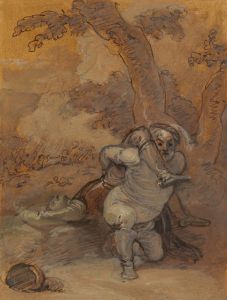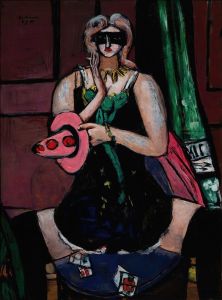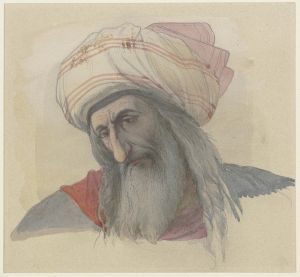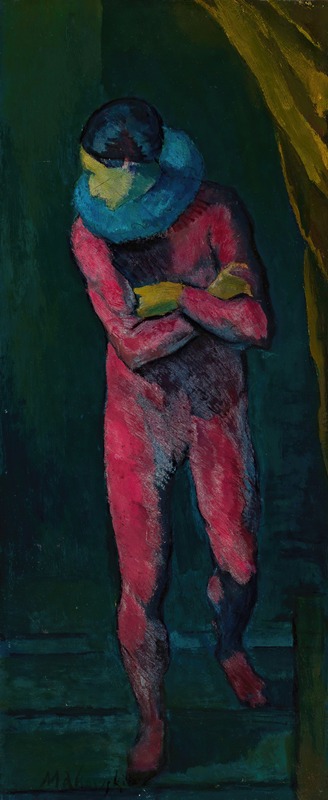
Pierrot
A hand-painted replica of Tadeusz Makowski’s masterpiece Pierrot, meticulously crafted by professional artists to capture the true essence of the original. Each piece is created with museum-quality canvas and rare mineral pigments, carefully painted by experienced artists with delicate brushstrokes and rich, layered colors to perfectly recreate the texture of the original artwork. Unlike machine-printed reproductions, this hand-painted version brings the painting to life, infused with the artist’s emotions and skill in every stroke. Whether for personal collection or home decoration, it instantly elevates the artistic atmosphere of any space.
Tadeusz Makowski was a Polish painter known for his unique style that combined elements of folk art, symbolism, and modernism. Born on January 29, 1882, in Oświęcim, Poland, Makowski initially studied classical philology at the Jagiellonian University in Kraków before turning to art. He later attended the Academy of Fine Arts in Kraków, where he studied under prominent Polish artists such as Józef Mehoffer and Jan Stanisławski. In 1908, Makowski moved to Paris, where he became part of the vibrant artistic community and was influenced by the works of Paul Cézanne and the Cubists.
One of Makowski's notable works is "Pierrot," a painting that reflects his fascination with the character of Pierrot from the commedia dell'arte, a form of theater characterized by masked "types" which began in Italy in the 16th century. Pierrot is a stock character, typically depicted as a sad clown, pining for love, and often portrayed with a white face and loose white clothing. This character has been a popular subject in art and literature, symbolizing the archetype of the misunderstood artist or the melancholic dreamer.
Makowski's "Pierrot" captures the essence of this character through his distinctive artistic style. The painting is characterized by its use of muted colors and simplified forms, which are hallmarks of Makowski's work. He often employed a childlike perspective, creating a sense of innocence and naivety in his paintings. This approach can be seen in "Pierrot," where the figure is rendered with a sense of simplicity and directness, evoking both a sense of whimsy and introspection.
The composition of "Pierrot" is notable for its balance and harmony. Makowski's use of geometric shapes and careful arrangement of forms reflects his interest in Cubism, although he adapted these elements to suit his own artistic vision. The painting's background is typically understated, allowing the figure of Pierrot to take center stage. This focus on the central character is a common feature in Makowski's work, where the human figure often serves as the primary subject.
Makowski's time in Paris exposed him to various artistic movements and allowed him to develop a style that was both personal and reflective of broader trends in European art. Despite his connections to the avant-garde, Makowski maintained a strong connection to his Polish roots, often drawing inspiration from Polish folklore and traditions. This blend of influences is evident in "Pierrot," where the universal theme of the melancholic clown is infused with a sense of Polish cultural identity.
Throughout his career, Makowski remained committed to exploring themes of childhood, innocence, and the human condition. His paintings often feature children, clowns, and other figures that evoke a sense of nostalgia and introspection. "Pierrot" is a quintessential example of this thematic focus, capturing the delicate balance between joy and sorrow that defines the human experience.
Tadeusz Makowski passed away on November 1, 1932, in Paris, leaving behind a body of work that continues to be celebrated for its unique blend of simplicity, emotion, and cultural depth. His paintings, including "Pierrot," are held in various collections and continue to be appreciated for their artistic and historical significance.





